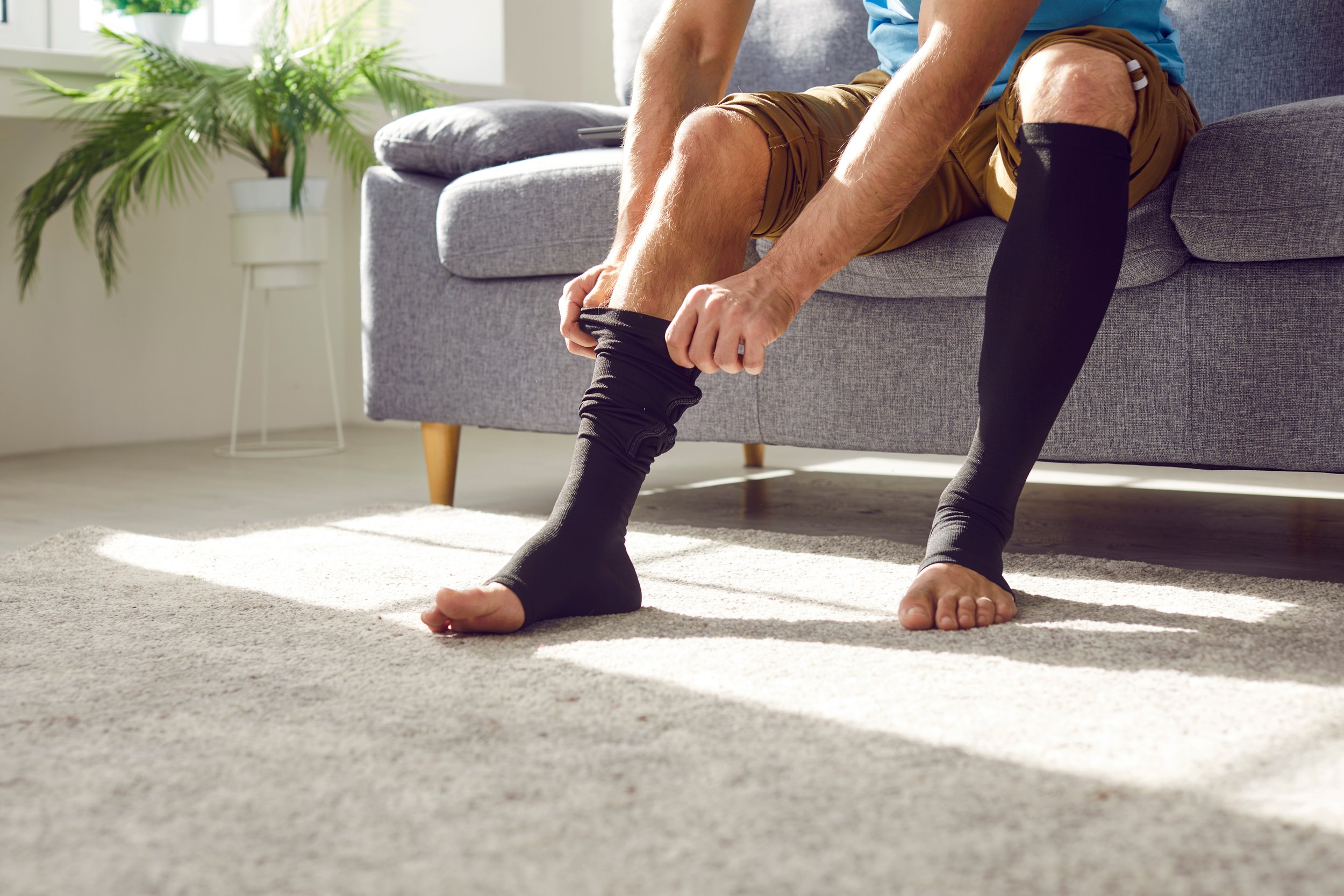Caring for your compression socks
Why is Proper Care Essential for Your Compression Stockings?
Proper care is essential for your compression stockings to maintain their efficacy and longevity. These specialized socks are designed with intricate elastic fibers that offer controlled pressure to your legs, improving blood flow and reducing discomfort or swelling. Over time or with improper care, these fibers can degrade, reducing the effectiveness of the compression. Moreover, accumulated dirt, oils, or skin cells can also deteriorate the material, further decreasing its lifespan. Therefore, caring for your compression stockings, from correct washing and drying methods to regular rotation and replacement, is integral not just to preserve the material and elastic integrity, but also to ensure they remain functional, comfortable, and beneficial for your health.
Tips for using them
In general, wear them when starting the day and take off before bed.
Remember, consistency is key to the effectiveness of compression therapy. Therefore, unless told otherwise by your doctor, wear your compression socks when starting the day and take them off before going to bed. The circulatory system adjusts when you lay flat, meaning compression isn't necessary. However, there are specific conditions, like Post-Thrombotic Syndrome, where wearing compression socks during sleep might be needed. It's crucial to adhere strictly to your healthcare provider's instructions to gain maximum benefit and avoid potential discomfort or complications.
Ensure proper fit.
Ensure your compression socks fit correctly. They should be snug, but not too tight that they restrict movement or cause discomfort.
Don't stretch them too much.
Avoid stretching your compression socks excessively when putting them on. This can strain the fabric and compromise their compression effectiveness. Also, consider using rubber gloves for a better grip when putting them on and to avoid damaging the fabric.
Rotate pairs of compression socks each day.
To maintain the elasticity and effectiveness of the socks, it's good practice to have multiple pairs and rotate them daily. This gives the elasticity of each pair a chance to restore before the next use.
Keep them dry and free of other products.
Store your socks rolled up in a clean, dry place at room temperature. Avoid areas with extreme temperature fluctuations. Before putting on your stockings, ensure your skin is dry. If you use a moisturizer, wait until it's fully absorbed. Lotions and creams can deteriorate the elastic fibers if they come into contact with the stockings.
Replace them every 3-6 months.
Even with the best care, compression stockings typically need to be replaced every three to six months depending on daily usage.
Reassess your sock size with weight changes.
If your weight or leg size changes significantly, it's crucial to reassess your compression sock size. Wearing socks that are too tight or too loose can be ineffective and uncomfortable.
Avoid rolling them down.
Rolling down the top of your compression socks might seem convenient, but it can lead to discomfort and compromise their effectiveness. Wear them pulled up to the recommended height.
Tips for washing
Wash them after each use.
To maintain the elasticity and effectiveness of compression socks, regular washing after each use is crucial. Washing helps restore the socks' compression levels and removes sweat and skin cells that can deteriorate the fabric.
Hand wash (or use a gentle cycle).
Hand wash them in warm water with a mild soap, rinse thoroughly, and air dry. If you prefer machine washing, use a gentle cycle and put the socks in a mesh laundry bag for added protection. Avoid using bleach or fabric softeners, as these can damage the delicate fibers of your socks, causing them to lose their compression capabilities sooner.
Inspect them for any wear and tear.
If they start to sag or lose their elasticity, it's time to replace them. Be cautious when handling sharp objects near your socks. Nails, jewelry, and other sharp objects can cause snags or tears in the material.
Tips for drying
Air dry and never wring them out.
After washing, press out excess water using a towel but never wring them. Wringing can damage the elasticity of the stockings. Always air-dry your stockings, out of direct sunlight and never use a heated dryer as the heat can damage the fibers.
Are There Different Care Techniques for Various Compression Levels?
Yes, different compression levels of stockings can require varied care techniques. Higher compression stockings, typically used for more severe symptoms or specific medical conditions, demand more careful handling. They should always be hand-washed with a gentle detergent and air-dried, away from heat and direct sunlight. It's also important to use a donning device to avoid overstretching these stockings. Always follow the specific care instructions provided with your pair to ensure optimal maintenance.
Remember, the better care you take of your compression stockings, the longer they will last and continue to provide the support you need. Always follow the care instructions provided by the manufacturer for best results.



